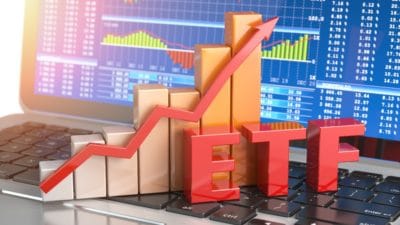“Dollar-cost averaging” is a proven investment strategy that investors can use in their portfolios to help reduce the frustration that many face in trying to time the market.
A dollar-cost average strategy is one that sees investors buying shares in a pre-determined, or “fixed,” amount at regular intervals, say, on a monthly, bi-monthly, or even on weekly basis. It’s a strategy that works particularly well with stable, blue-chip companies — for example, dividend-paying stocks like Enbridge (TSX:ENB)(NYSE:ENB) or Toronto-Dominion Bank (TSX:TD)(NYSE:TD). You could decide that you were going to buy $100 of Enbridge stock every month.
Sticking to a dollar-cost averaging strategy means you’re going to have the benefit of purposefully ignoring any fluctuations in the company’s stock price as well as any fundamental factors, including negative (or positive) stories you may read or see about the company online or in the media.
While this approach may seem counter-intuitive to some, there are actually several good reasons why it could be the right strategy for you.
Eliminating the risk of going “all-in”
Particularly if you are new to investing, you may be experiencing some degree of anxiety about putting those hard-earned savings of yours at risk in the market.
But instead of “putting all your eggs” into the market in a single trade, you may find it easier to spread your investments out over time, allocating a little bit of capital into the market each month.
Dollar-cost averaging requires less capital up front
Another obstacle standing in the way of many investors getting involved in the market is that they may not have a lot of savings available to establish their desired position in a company’s stock.
A dollar-cost averaging strategy can help to address this by only requiring you to put in a little bit of money each time. However, in the end, those regular commitments should end up being a sizable investment just the same.
Lowering your cost base
This could very well be the single biggest advantage of a dollar-cost averaging strategy in terms of its financial rewards.
Because you are committing a fixed dollar amount each period, you are going to end up buying fewer units of stock when the price is high and more when the price is low.
Figuratively speaking, this should go a long way to help reduce the average cost base of your investments and, in doing so, boost your profits.
Eliminating the risk of trying to time the markets
While lowering your cost base may be the most financially rewarding aspect of using a dollar-cost averaging strategy, eliminating the anxiety and frustration that can come with trying to time the markets may be most rewarding in terms of the overall enjoyment you get out of investing.
Instead of buying low and selling high, many beginning investors fall victim to any one of the many trappings of the markets and end up buying in at the worst possible time, effectively buying high and selling low.
By spreading out smaller incremental investments over a longer period of time, a dollar-cost averaging strategy can go a long way to helping investors avoid this costly — and very frustrating — mistake.
Save yourself valuable time
Time is money, after all.
Getting it right can take countless hours of research — and there’s still never any guarantees things will ending up unfolding the way you’d planned.
By following a dollar-cost averaging strategy, you’ll be completely eliminating any time spent on analyzing charts and price data.
In the end, you’ll be freeing up more time to pursue more financially rewarding endeavours.
Stay Smart. Stay Hungry. Stay Foolish.








